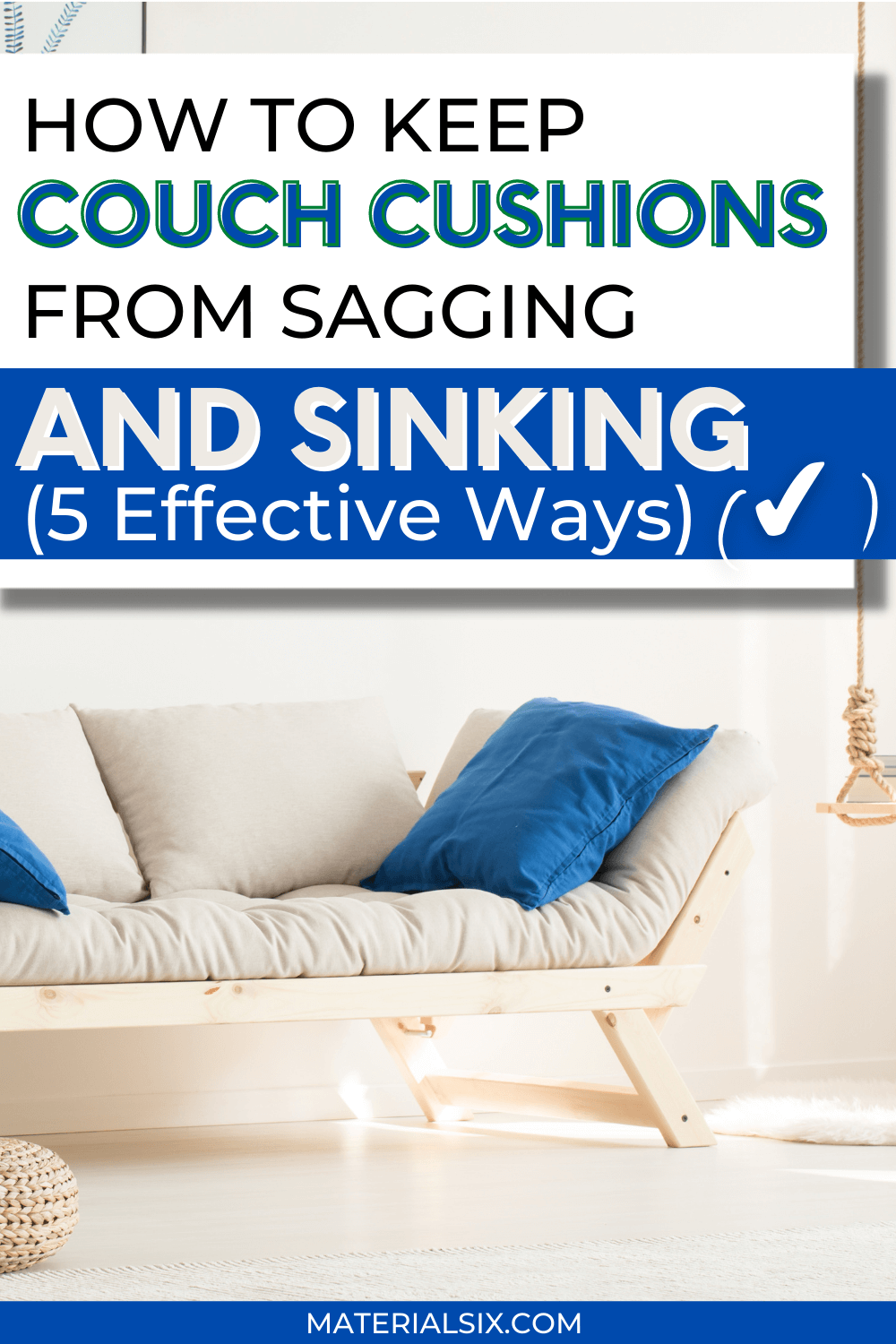Are you aware that you can put things under couch cushions to make them more firm and stop potential sagging?
Few things are more discomforting than a saggy couch cushion. Especially when you have returned to your home from a long hard days’ work. You want to sit back and relax whether it be with family or just by yourself. But a sagging couch makes that a farfetched dream.
But wait, don’t just plan to discard that perfectly useful couch because of a lousy sagging cushion! There are some excellent do-it-yourself ideas that you can apply to come up with alternate supports for your couch cushions.
The purpose of this article is to highlight the reasons why couch cushions tend to sag and what remedies are available to implement and prevent further sagging of your beloved cushions, making sure this problem is a thing of the past rather than an impending issue of the future.

Reasons as to why your cushions sink or just sag
1. Broken Frame
A common cause of sagging or sinking cushions is a broken couch frame, especially if your couch is made of wood. The wood making up the frame that supports your couch and its cushions can fail under heavy weights acting on it for an extended period of time.
The solution is to repair the frame if it is broken by cutting up some plywood or a piece of cardboard and fixing it in the damaged area.
2. Improper weight distribution
Another probable cause of sinking or sagging cushions is your own preferred seating position. If you like to sit on one side of the couch more than the other then the side being used sags more quickly.
The only solution here is to insert new pieces of foam into the cushions or use fiberfill instead.
3. Dozing off on your sofa
Admit it, we’ve all slept on the couch at some point in our lives. It’s just too comfy to resist! Also, it is a bad habit that tends to weaken the springs propping up the cushions over time due to repeated stress.
The remedy here is to simply replace the worn-out springs with new ones rather than buy a whole new couch.
Things You Can Use for Propping Up Sagging or Sinking Couch Cushions
1. Replace the inserts
When your cushions sag, they create hollow spaces. This reduces their ability to support your weight.
The do-it-yourself method is to buy replacement foam inserts from the store. A common variant is foam inserts that are of industrial quality and strength. Just add new inserts of foam in the unzipped cushions to replace the worn-out ones. Also, don’t forget to compress the foam and squeeze it into the cushion covers to make sure that they don’t shift places while in use. Now zip it back up, and you’re ready to use them again.
2. Anti-sag supports
If DIY is not your strong suit, then just opt for using LAMINET Supports instead. They are designed to not only prevent further sagging of the cushions but at the same time, also provide added weight-bearing capacity and help with correct seating posture.
These types of supports are also foldable so that they can be stored away when not needed.
3. Using Plywood or Cardboard under cushions
This is another one for the DIY types out there. Just remove the cushions and get the dimensions of your couch. Buy a ¼ inch (in thickness) piece of plywood. Cut it so that it fits the dimensions of your couch perfectly without sticking out too much in the front.
Also, since the cut material will be rougher on the edges, you can use duct tape or slipcovers to cover the cut edges to prevent any damage to the seat.
After this, put the cushions back in place and enjoy a sag-free experience.
4. Using polyester fiberfill or some batting
Compared to foam inserts, these can provide extended support over a longer period of time to not sink or sag in the couch.
To install them, just unzip the cushion covers and fill them up. Zip them back and place them on the couch.
5. New springs
If the cause for sagging cushions is failed springs, then the solution is to switch them out with new ones.
The new springs will provide added support and prevent excessive sinking of the cushions while preventing any further sagging.
Things to Do to Prevent Cushions Sinking
1. Flipping cushions
This is a good strategy to employ if the couch is in regular use.
If you have a habit of using one part of the couch too much, then doing this will allow for even wear of the cushions. This will prevent sagging in certain parts.
2. Remove the fiber before washing
If your cushion covers are of the type that needs regular washing, then removing the fiber filling before doing so will make sure that they do not become weak after the wash.
Also, check to see if your covers require dry cleaning instead. A careful reading of the instructions is also necessary to take the right actions and keep your couch cushions in good shape.
Conclusion
We have mentioned everything from putting stuff under cushions to fixing or replacing damaged or worn-out parts. With a little bit of investigation, you can identify the root cause of sagging or sinking and use your DIY skills to replace or repair the damage without needing to throw out the couch and buy a new one.
More from Materialsix.com:


